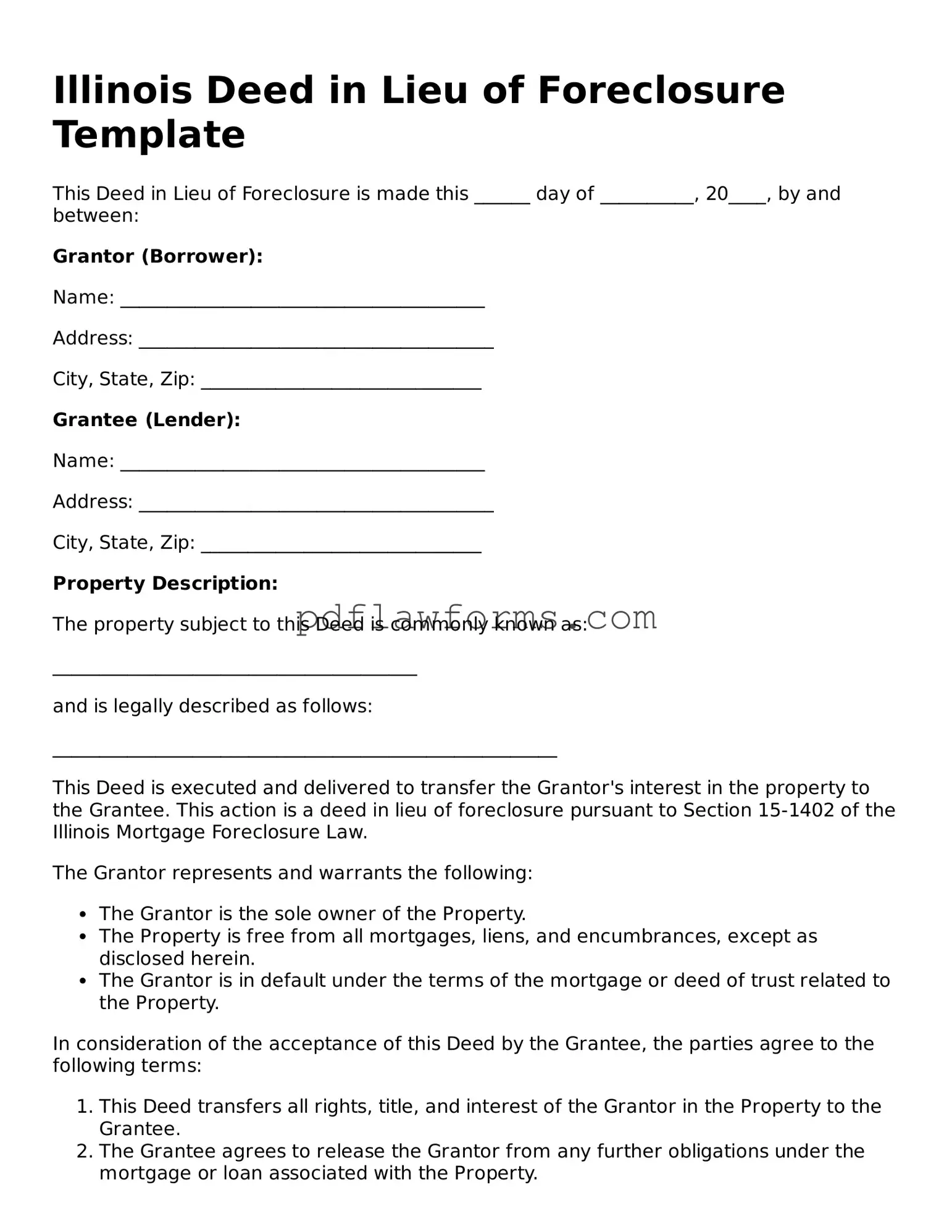In Illinois, homeowners facing financial difficulties may find the Deed in Lieu of Foreclosure to be a viable alternative to the lengthy and often stressful foreclosure process. This legal document allows a homeowner to voluntarily transfer their property to the lender in exchange for the cancellation of the mortgage debt. By choosing this option, homeowners can avoid the negative consequences associated with foreclosure, such as damage to their credit score and the potential for legal complications. The Deed in Lieu of Foreclosure form typically requires the homeowner to provide specific information about the property and the mortgage, including details about the loan balance and any outstanding liens. Additionally, the lender may require a thorough review of the homeowner’s financial situation before accepting the deed. This process can lead to a smoother transition for the homeowner, who may also negotiate terms such as the possibility of remaining in the property for a short period after the transfer. Understanding the implications and requirements of this form is crucial for homeowners looking to navigate their financial challenges effectively.
